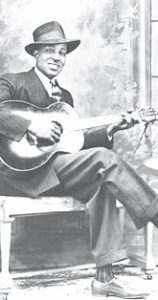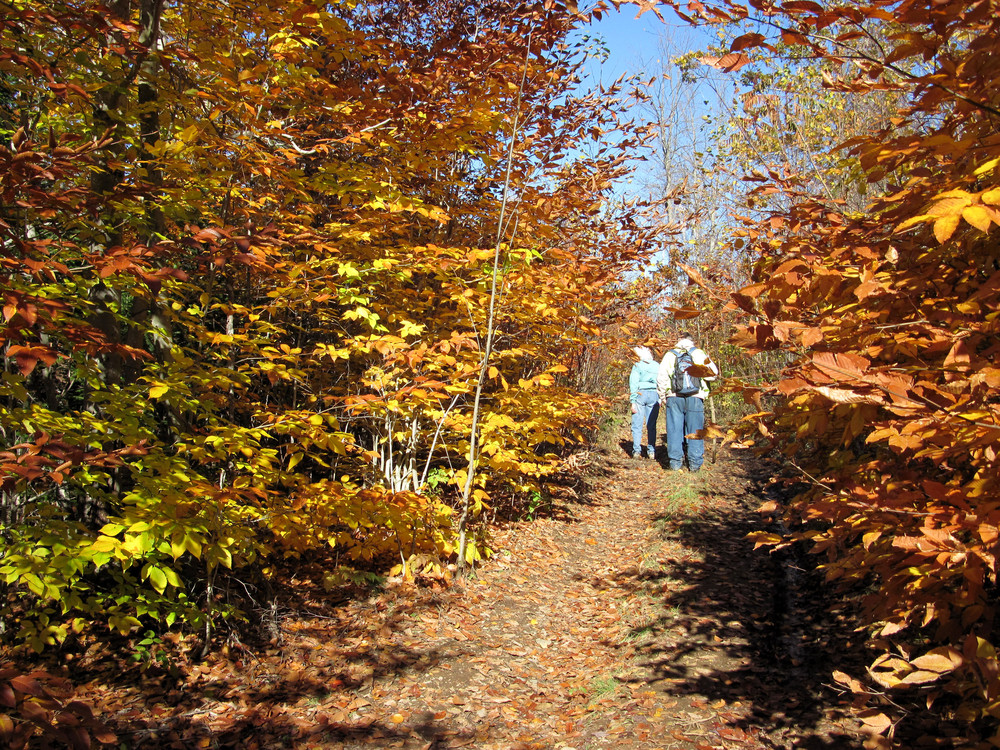EVELYN M. BOLDUC
BENTON––Evelyn M. Bolduc, 85, passed away Thursday, September 28, 2017, in Benton, where she resided with her daughter, Anne. She was born in Oakland on August 29, 1932, the daughter of Charles and Laura (Carpenter) Veilleux.
She grew up in Waterville and left school at a young age to go to work to help support her family.
On September 1, 1951, she married her true love, Lawrence Bolduc. They were wed at St. Francis de Sales Church, in Waterville. They were blessed with 44 years together.
Evelyn along with Larry created rental properties known as “Bolduc Apts.” They also owned and operated Sandy Beach Campground, in Madison.
After retiring they enjoyed several bus tours to Washington D.C., and the Grand Ole Opry, along with many winters in Holiday, Florida. creating many lifetime friendships.
Evelyn was always volunteering and helping everywhere she could. Until she fell and broke her arm last year, she had volunteered for seven years at St. John Food Pantry helping to feed the hungry.
She loved going out to eat, playing the Hee-Haw machine at Hollywood Slots, girl trip to Ellsworth each winter, Bingo, playing cards and watching her heart throb, “James Drury” on “The Virginian.” She even had a beta fish her granddaughter gave her named “James.” She also loved scrapbooking and made many albums filled with loving family memories.
Evelyn was predeceased by her husband, Larry; her son, Leo, her infant son Lawrence, Jr.; and son-in-law, Chuck Hodgdon; also three sisters, Lillian Berube, Gloria Dawe and Yvette Butler; and two brothers, Arthur Albert and Richard Vigue.
Evelyn is survived by three children, Gary Bolduc and wife, Paula, of Winslow, Anne Hodgdon, of Benton, and Louann Barnes, of Skowhegan; 10 grandchildren; eight great-grandchildren; a brother, Robert Veilleux; two sisters, Violet Paquet and Theresa Cloutier; and a brother-in-law, Roger Bolduc; along with many nieces, nephews and cousins.
An online guestbook may be signed and condolences expressed at www.gallantfh.com.
BARBARA W. FITZPATRICK
BENTON––Barbara Wright Fitzpatrick, 94, of 336 River Road, passed away Saturday, September 30, 2017, at her home in Benton.
Barbara was born September 1, 1923, in Framingham, Massachusetts, the daughter of Samuel and Mabel (Farrar) Wright.
Barbara’s family moved to Clinton when she was age seven. Barbara attended Clinton schools, and graduated from Clinton High School.
During World War II she worked for the phone company in Newport News, Virginia, Newport, Rhode Island, and Waterville.
On August 17, 1946, Barbara married Glenn Fitzpatrick, of Benton. She worked in the office of Fitzpatrick Dairy part time. The dairy started in 1923 by Glenn’s father and was located next door to their home. The business was owned and operated by Glenn and his brother Merle until 1988. In addition, Glenn and Barbara maintained a herd of cows until the early 1970s.
Barbara’s hobbies included playing piano, gardening, and sewing. She was very crafty and artistic and Barbara’s home is filled many of her creations. Barbara was the past president of the Wesleyan Club and the Women’s Club, both in Fairfield. For years she enjoyed swimming regularly at the Waterville Boys and Girls Club.
Barbara was predeceased by her husband Glenn in 2011; her parents; her siblings, Sam, Stan, Charlie, Dave, Phil, Caroline, Marybelle, and Margaret; and nephews, Harry and James Fitzpatrick.
Survivors include two daughters, Marilyn Fitzpatrick Cosgrove and husband David, of Waterville, Judy Fitzpatrick-Weston and husband Peter, of Scarborough; two granddaughters Laura Cosgrove, of Waterville and Beth Cosgrove and husband Seth Dromgoole, of Park City, Utah; great-grandchildren , Margaret and Jay Brock, of Waterville, and Sally and Samuel Dromgoole, of Park City, Utah; nephew Merle, Jr. Fitzpatrick and wife Judi, of Shawmut; and her sister-in-law Dorothy Wright, of Greenfield, Massachusetts.
An online guestbook may be signed and memories shared at www.lawrybrothers.com.
In lieu of flowers, please donate to the charity of your choice in Barbara’s memory.
HEATHER A. MAYO
VASSALBORO––Heather Ann Mayo, 47, of Main Street, died Sunday, October 1, 2017, at Maine Medical Center, Portland, following an extended illness. She was born in Framingham, Massachusetts, on January 5, 1970, the daughter of Charles Burton Hammond and Barbara L. (Kent) Hammond.
Heather graduated from Somersworth (New Hampshire) High School.
She was employed as a store manager by Rite Aid Pharmacy for several years.
Heather was predeceased by her father, and a brother, Craig Hammond.
Surviving are her husband, Richard J. Mayo, of Vassalboro; a son, Joseph C. Mayo, of Vassalboro; two sisters, Amy Hodgson, of Somersworth, New Hampshire, and Lisa Dore, of New Durham, New Hampshire; five brothers: Chris Hammond, of Milton, New Hampshire, Brian Hammond, of Minneapolis, Minnesota, Kerry Hammond, of Milton, New Hampshire, Jimmy Hammond, of Vassalboro, and Scott Hammond, of Tampa, Florida; her sister-in-law, Becky Mayo, of Somersworth, New Hampshire; her parents-in-law, Joseph and Betty Mayo, of Berwick; and several nieces, nephews and cousins.
Condolences, photos and memories may be shared at www.plummerfh.com.
Memorial donations may be made to Brigham and Woman’s Hospital, Heart Transplant Program, or to Delta Ambulance.
SPENCER R. GAGNON
FAIRFIELD––Spencer Reid Gagnon, 25, died unexpectedly Sunday, October 1, 2017, at his home in Fairfield. Spencer was born April 17, 1991, to Frank D. Gagnon and Iris J. (Stoddard) Gagnon.
He was raised in Rochester, New Hampshire, and Benton, where he attended local schools and graduated from Lawrence High School, in Fairfield.
Spencer had many hobbies; among them were working out, reading, and tinkering in his garage. He had a true passion for music; he enjoyed playing the guitar. He loved cats.
Spencer was a peace keeper. Everyone who knew him was blessed by his kindness and sense of humor. His legacy is the kindness he shared with everyone he met.
He was predeceased by his father, Frank D. Gagnon Sr., on April 28, 2007.
Spencer is survived by his mom, Iris J. Gagnon, of Fairfield; his two brothers, Frank D. Gagnon Jr., and wife Marcia Gray, of Dover, New Hampshire, and Michael Gagnon and wife Mary Hand, of North Berwick, and his children, Zoey and Kaynan; his five sisters, Kimberly Grate, of Freeport, and her children, Ashley, Jessica, Joseph, Sarah, Abigail, Olivia and Sophia; Kristina Ferraro and husband Anthony, and their children, Anthony, Kennedy and Baylie, all of Benton; Sherri Pedrick and husband Thomas, and their sons, Lincoln, Harry, and Quincy, all of Rochester, New Hampshire; Emily Gagnon and her partner Rick Plaisted, and their daughter Natalie, of Rochester, New Hampshire, and Julie Gagnon, of Portland; and many aunts, uncles, and cousins.
An online guestbook may be signed at www.lawrybrothers.com.
THERESA A. MCKENNEY
PALERMO––Theresa A. (Gove) McKenney, 68, died Sunday, October 1, 2017, at the Alfond Center for Health, in Augusta, following a long illness. She was born in Augusta, on March 27, 1949, the daughter of the late Lawrence Gove Sr. and Simone (Blouin) Gove. She was raised by her grandparents, Leslie and Eva Gove, of Weeks Mills.
Theresa was a 1967 graduate of Erskine Academy and was a member of the Palermo Snowmobile Club. In 1988, she married Dennis McKenney, of Palermo. She was happy to be part of the McKenney family, of Palermo,l for almost 30 years. She always enjoyed their family gatherings around birthdays and holidays, as well as summer afternoons at Westshores on Sheepscot Lake. As a third-generation upholsterer, she was the owner/operator of Country Loft Upholstery for over 30 years. Being self-employed allowed her the flexibility to have her grandchildren get off the bus at “Nanny’s house and enjoy time with her until they were picked up at night.
Theresa loved the outdoors and enjoyed many trips to Loony Town, a camp she and her husband built on Loon Lake in northern Maine. Many of those trips included two vehicles loaded with grandchildren to enjoy animal spotting, fishing, swimming, and of course, plenty of snacks. Her green thumb kept her busy in the summer and fall, as she enjoyed tending to flowers and vegetables. In the fall she was likely to be found canning the goods from the garden, much of which was given away to loved ones.
Theresa was predeceased by two brothers, Leroy and Daniel Gove; as well as a nephew, Sonny Gove.
She is survived by her husband, Dennis J. McKenney, of Palermo; son, Scott Pilsbury and his companion Diana Bickford, of Windsor; son, Joseph Pilsbury and wife Natalie, of Westbrook; daughter, Angela Plummer and husband Jeffrey, of Palermo; 14 grandchildren; five great-grandchildren; three brothers: Lawrence Gove Jr., and wife Jackie, of Pittston, Robert Gove and wife Sheila, of Windsor, and Richard Gove, of Whitefield; a sister Shirley Hopkins and her husband Timothy, of Augusta; as well as many nieces, nephews and cousins.
At her request, there will be no public visiting hours. A funeral service will be held Saturday, October 14, at 1 p.m. at the Erskine Academy gymnasium, in South China. Burial will follow in Hannan Cemetery, Palermo. Arrangements are under the care of Plummer Funeral Home, Windsor Chapel, 983 Ridge Rd., Route 32, Windsor.
Condolences, photos and stories may be shared at: www.plummerfh.com.
Memorial donations may be made to Kennebec Valley Humane Sociey, 10 Pet Haven Lane, Augusta ME 04330.
MARTHA TOMPKINS
JEFFERSON––Martha Bond Tompkins, 91, of Jefferson, died on Monday, October 2, 2017, in Newcastle. She was the daughter of Willis A. and Ruth Hodgkins Bond, both of Jefferson and was born on August 2, 1926, in the home of her Bond ancestors, early settlers of the town of Jefferson,
Martha attended the Jefferson Village School through 8th grade, and then attended Cony High School, in Augusta, graduating in the class of 1944. She graduated froom the University of Maine in Orono with a BA in physics in 1948. The same year she started employment at the Naval Research Laboratory in Washington, D. C., working as a physicist in the rocket section, a forerunner of NASA.
In 1952 she married Robert D. Tompkins, an electrical engineer at NRL. They lived in Chile for 18 months while Bob was employed as an engineer for Bethlehem Chile Iron Mines. On their return to the U.S. with young daughter, Ann, they returned to Washington, D.C., where Bob was again employed at NRL.
On Bob’s retirement in 1981, they retired to Jefferson and built a home on the original Bond property overlooking Damariscotta Lake. Here many happy years were spent, with family and friends, gardens, church and community work, and research into town and family history.
She was a member of the First Baptist Church of Jefferson for 78 years, was a life member of the Jefferson Historical Society and secretary of the Bond Burying Ground Association for many years.
She was predeceased by her husband of 65 years and is survived by daughters, Ann Liburt, of Jefferson, and Marilyn Tompkins, of Jackman; sons, Steven Tompkins, of Glenn Dale, Maryland, Andrew Tompkins, of Leesburg, Virginia, and Richard Tompkins, of Plana, Texas; seven grandchildren; one great-granddaughter; sisters, Kathryn Maryan, of Ocala, Florida, Emily Kaune, of Nederland, Colorado, and Beverly Blair, of Cape Elizabeth; and several cousins, nieces and nephews.
Memorial donations may be made to the First Baptist Church, P.O. Box 921, Jefferson ME 04348.
To extend online condolences, please visit www.hallfuneralhomes.com.
DOROTHY A. POOLER
WINSLOW––Dorothy A. Pooler, 76, of Winslow, passed away on Tuesday, October 3, 2017, at the Alfond Center for Health, in augusta. She was born in Albion on April 9, 1941, the daughter of James and Pauline (Flye) Pottle.
Dorothy graduated from Besse High School, in Albion, and later from Center Maine Beauty School, in Augusta. She owned and operated Dorothy’s Beauty Salon, in Waterville, for many years. Her hobbies included snowmobiling, knitting and attending her great-granddaughter Lili’s horse shows and events.
She was predeceased by her husband, Lawrence Pooler; two brothers, Raymond Pottle and Lloyd Pottle; a sister, Helen Burgess; a grandson, Travis Finley; and a great-grandchild, Liam Finley.
She is survived by her daughter, Ronda Bell, and her husband Kevin, of Windsor; stepdaughter, Kimberly Marois, of South China; a grandson, Justin Finley; four great-grandchildren, Kaden Finley, Lukas Finley, Lilianna Finley and Leah Finley; two step-grandchildren; several nieces, nephews and cousins.
Condolences, memories, photos and videos may be shared with the family on the obituary page of the website at: www.khrfuneralhomes.com.
Memorial donations may be made to the Humane Society Waterville Area, 100 Webb Road, Waterville ME 04901.
CELEBRATION OF LIFE
A Celebration of Life will be held for David Frost of Norridgewock at 16 Ryan Lane, Skowhegan on Saturday October 21, 2017 from 1:00-4:00 p.m. For directions or further information call 778-2580 or 431-9964
 REVIEW POTPOURRI
REVIEW POTPOURRI


 by Katie Ouilette
by Katie Ouilette by Marilyn Rogers-Bull & Percy
by Marilyn Rogers-Bull & Percy
 GARDEN WORKS
GARDEN WORKS Making grape juice is refreshingly simple and an exciting departure from the occasional drudgery that can accompany preserving jar after jar of produce in the autumn-time kitchen. From there, the juice can be enjoyed right away, left a couple days to develop effervescence, or aged further into wine or vinegar. (I’ll leave it to you to determine how you wish to proceed.) For now, though, let’s look at the joyous occasion of extracting the juice the way it has been done for ages. From the vine to the press, we’ll see how to handle grapes in a way that will produce some of the yummiest juice in all the land.
Making grape juice is refreshingly simple and an exciting departure from the occasional drudgery that can accompany preserving jar after jar of produce in the autumn-time kitchen. From there, the juice can be enjoyed right away, left a couple days to develop effervescence, or aged further into wine or vinegar. (I’ll leave it to you to determine how you wish to proceed.) For now, though, let’s look at the joyous occasion of extracting the juice the way it has been done for ages. From the vine to the press, we’ll see how to handle grapes in a way that will produce some of the yummiest juice in all the land.
 ERIC’S TECH TALK
ERIC’S TECH TALK Unlike your personal computer, a driverless car is a thinking machine. It must be capable of making moment-to-moment decisions that could have real life-or-death consequences.
Unlike your personal computer, a driverless car is a thinking machine. It must be capable of making moment-to-moment decisions that could have real life-or-death consequences.